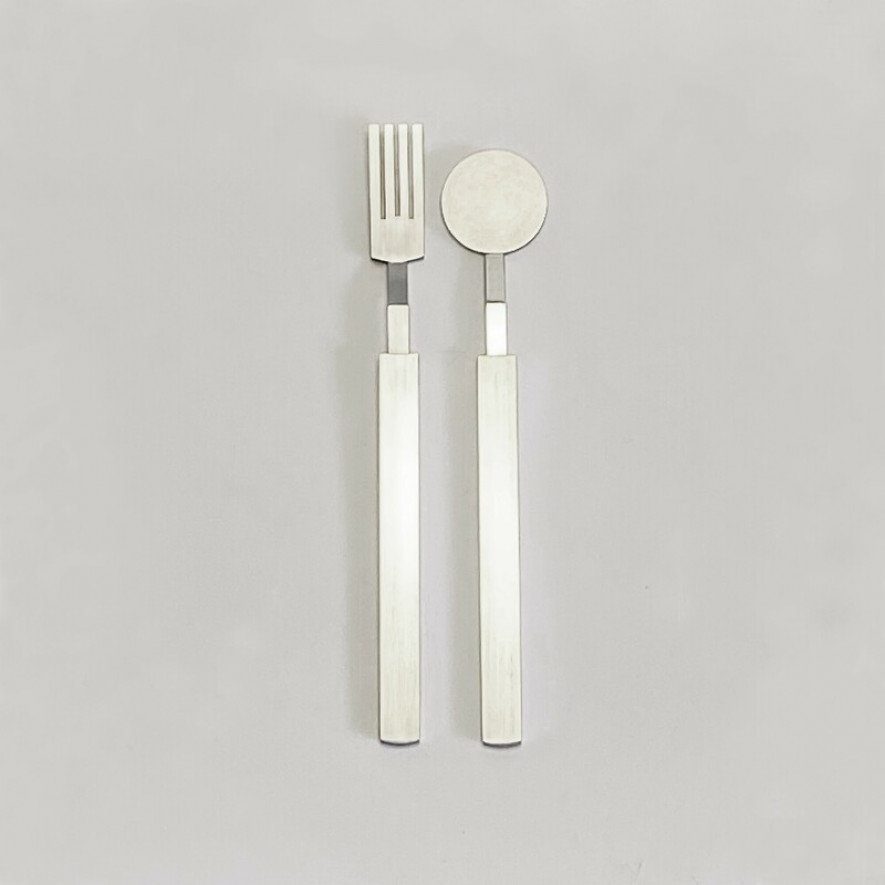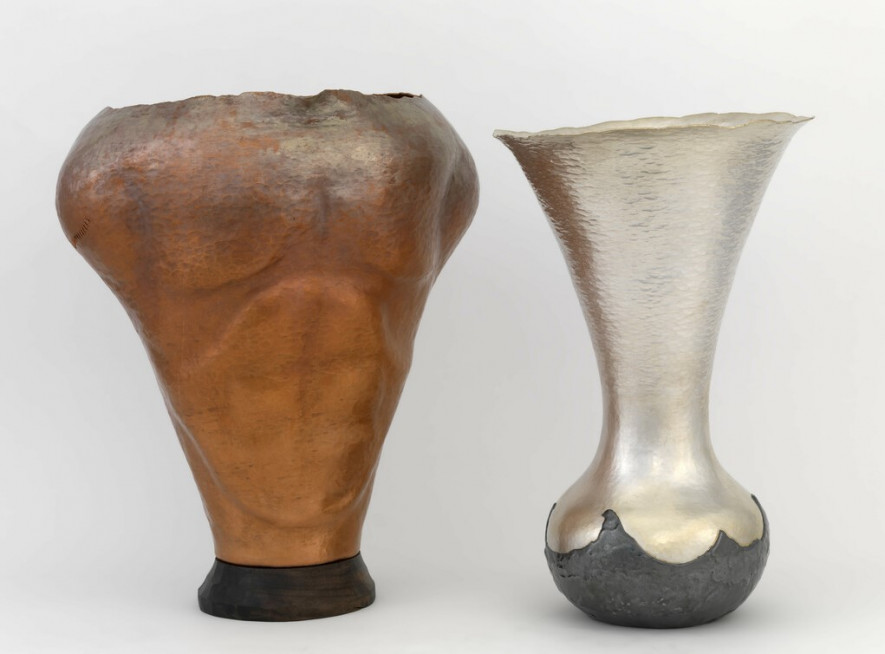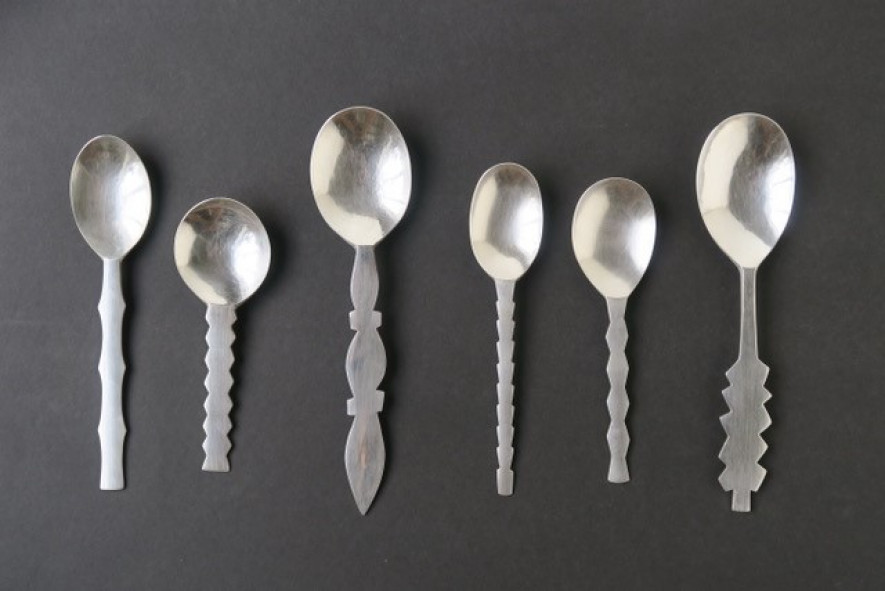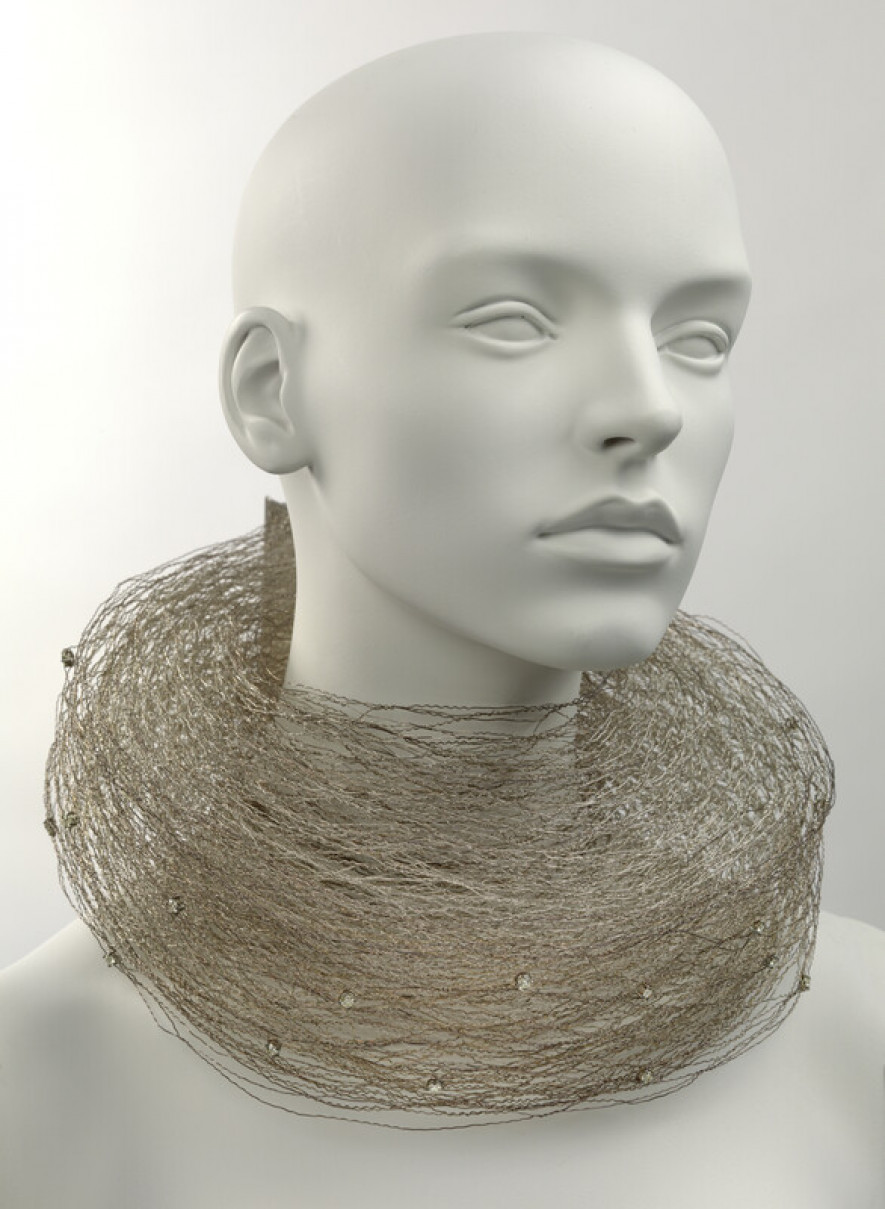There are discernible links between creations in the Silver Triennial and items on display in DIVA’s permanent exhibition A Brilliant Story. What are the similarities?
Firstly, of course, the objects in the Silver Triennial are made of silver. DIVA’s own collection contains many objects made of this precious metal. Furthermore, the Silver Triennial presents work by contemporary silversmiths. DIVA also collects silver by contemporary designers, particularly Belgians. For example, in 2022 DIVA purchased an object from the current Silver Triennial: Undatio by Helena Schepens.
There are less obvious connections, too, as you will discover below. Ten pieces from DIVA’s collection conduct a dialogue with ten pieces in the Silver Triennial created by contemporary silversmiths. The Silver Triennial is an international competition organized every three years by the German Association for Goldsmiths’ Art (Gesellschaft für Goldschmiedekunst) and the German Goldsmiths’ House (Deutsches Goldschmiedehaus) Hanau. A panel of experts picks out the most innovative objects, which then tour Europe in the Silver Triennial exhibition, giving the public the chance to discover the latest trends and innovations in silversmithing.
Would you like the chance to admire the objects from the Silver Triennial for real? Then visit The 20th Silver Triennial. Exhibition for contemporary design until 8 October 2023.
1. As dining became increasingly refined in the 18th century, new forms of silver objects appeared on the dining table. Those who could, flaunted oil and vinegar stands, salt and mustard pots, sauce boats and cutlery for different courses and dishes. Elaborately laid tables would display a sugar sifter spoon, soup or stew ladle, strawberry scoop and asparagus tongs.
Contemporary silversmith Herbert Schulze came up with cutlery for eating artichokes. Which dish would you like special cutlery for?
2. Believing it to be high time chopsticks could be placed elegantly on the table without sullying it, the American silversmith Susan Coddon came up with this silver rest or holder for chopsticks.
Was it inspired by a knife rest perhaps?
A knife rest is an object placed above and to the right of your plate. The knife blade lies on this rest or bar so as not to sully the tablecloth.
Knife rests were very popular at the end of the 19th/beginning of the 20th century. They were sold in sets of 4, 6 or 12 in different styles and materials: silver, crystal, wood, etc.
DIVA’s collection boasts numerous knife rests, including this one by the Brussels firm Delheid Frères.
3. What do you keep your supply of tea in? In the 17th century, tea was a luxury product in Europe, the preserve of a wealthy elite, who kept the tea leaves in special tea caddies fitted with a lock and often made of costly materials such as silver. You will find several tea caddies on display in the Room of Wonder in DIVA’s permanent exhibition.
Silversmith Yuan Cheng Chang made a most unusual tea caddy for the Silver Triennial. Its shape recalls the famous ancient figure, the Venus of Willendorf.
The Antwerp silversmith Georges Cuyvers also drew inspiration from the human body for these two vases titled Prelude to a Kiss. The two objects are like yin and yang. They contrast, complement and challenge each other and together constitute perfection. Do you see a male and female body in them?
Both Chang’s female body and the two figures by Georges Cuyvers were hammered entirely by hand. Hammering is a process used to shape an object. With a hammer and small anvil known as a ‘stake’, the silversmith can create a jug, bowl or dish out of a sheet of silver. A masterly example of silversmithing!
4. As pure silver is too soft for practical applications, it is melted with other metals for making utensils. That combination of silver and another metal is called an alloy. The resulting alloy usually consists of 92.5% silver and 7.5% copper or other metals. This is known as sterling silver and denoted by 925/1000.
For the Silver Triennial some designers like Catherine Large experimented with fine silver, i.e. silver in its purest form: 999 particles of the alloy are silver. Hammering an object out of fine silver poses an additional challenge for the silversmith. Covid-19 forced the Australian Catherine Large to spend a total of 704 days in lockdown. Did you realize that each square on her vessel stands for one day in lockdown?
The Dutch duo of silversmiths Thalen & Thalen also took up the challenge of using fine silver and made this vase, now in DIVA’s collection. The finish on the outside resembles rippling water. The silversmiths created these ripples using the chasing technique, i.e. working on the front surface of the object and shaping the silver with hammer and punch to produce relief decoration.
5. Precious metals are the materials of choice for church plate used during Holy Communion. A monstrance or ostensorium is a sacred vessel used in the Roman Catholic Church to display the unconsecrated Host. The Host is enclosed in a crescent-shaped holder called a ‘lunula’. The first known use of a monstrance dates back to the 13th century. Introduced in the baroque period, the sunburst design led the eye to the Host, giving it greater emphasis. The rays symbolize the divine triumph.
Did you know that silversmiths still make silver objects for the preservation of the sacred Host? Don’t miss Bruno Sievering-Tornow’s host box in the Silver Triennial.
6. This dish Origin of Species by the Belgian gold and silversmith Patrick Storme (°1960) was inspired by the undulating pattern on a 16th-century tazza - a shallow drinking cup - in DIVA’s collection. The undulating pattern reminded Storme of water and he describes the object as a silver water element. As Darwin propounded in his On the Origin of Species, life on earth began in small pools of water.
In the past few years, Patrick Storme has specialized in embossing, the technique used to produce this pattern on silver. With this technique the silversmith can decorate the object and refine it with raised ornamentation or figures. He works on the outside of the object and shapes the silver with a hammer and punch.
7. How can you make one of man’s oldest items of cutlery interesting? “I’ll create a range of spoons,” silversmith Peter Verburg must have thought. Each handle is a different shape, reminiscent of distinct musical rhythms. Together they form a (spoon) concert!
Rembrandt Jordan also drew inspiration from music when creating his Sterckshof commission in 2002 for the then Sterckshof Silver Museum of the Province of Antwerp. He made a set of decorative stone elements and silver utensils. This set consists of salt and pepper cellars, a spice pot, two sugar casters, a cheese grater, a water jug and a vase.
8. The term ‘openwork’ refers to the technique used by silversmiths to create openings or gaps in, for example, a sugar caster or a sugar sifter spoon. Using a saw, the silversmith removes metal to create a network of geometric or figurative motifs.
Helena Schepens used this technique for her Undatio object, which is on show in the Silver Triennial. Schepens produced an intricate pattern by taking away metal with a saw and a drill. This intricate pattern makes her work look almost transparent and injects ‘life’ into it.
The DIVA museum purchased Undatio in 2022. Once the travelling Silver Triennial exhibition has come to an end, the bowl will go on display in the permanent exhibition A Brilliant Story.
Did you know that another object by Helena is also part of DIVA’s permanent collection? Once the travelling exhibition has finished its tour, you will find one of the bowls from the Perpetuum Mobile set on show in the Atelier.
9. Silver wire forms the basis of Maja Houtman’s objects and also of Christophe de Ranter’s collar.
Maja Houtman strings or weaves together silver wire, pulling and stretching it and placing a granule on the end.
Christophe De Ranter added brilliant-cut diamonds to his piece of neck jewellery, drawing inspiration from the prestigious, lace millstone collars fashionable in the baroque period. In this modern version, it is the sparkling jewels, and in particular the diamonds, that give the wearer status. Whether it will make it onto the high street remains to be seen…
10. Does this piece of Knex jewellery remind you of snowflakes? The work by the Japanese silversmith ByunGik Park is made up of thousands of what look like falling snowflakes welded or soldered together.
The ring comprising several little Knex-like pieces was made by Charlotte Goyvaerts. The fact that it consists of several parts allows the wearer to experiment with different looks. Consequently, the wearer becomes the designer, who can convert the jewel into a new and unique piece many times over. This piece is all about creativity and playfulness. Just like the snowflake wreath in the Silver Triennial.


-1.jpg)



















